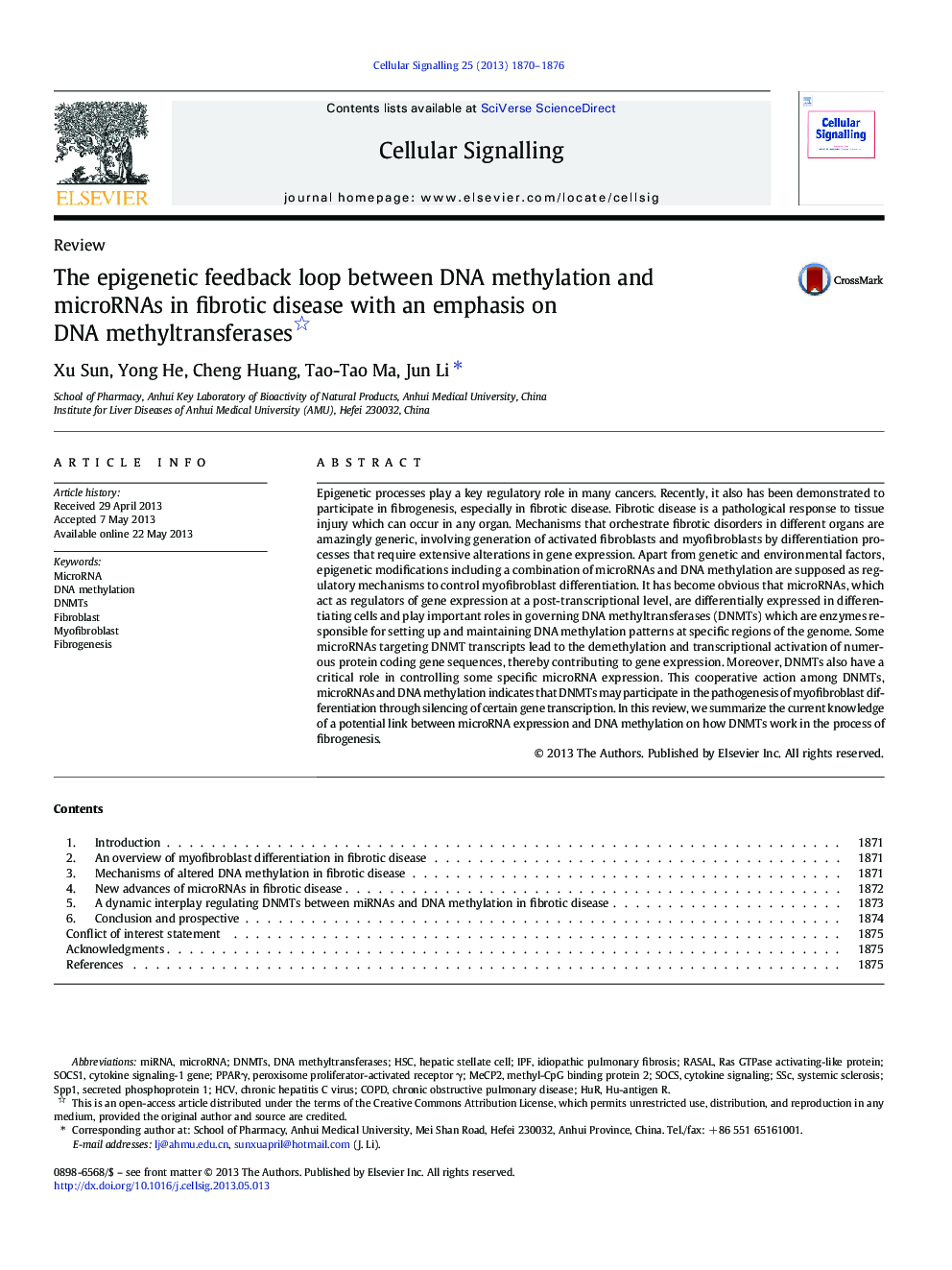| Article ID | Journal | Published Year | Pages | File Type |
|---|---|---|---|---|
| 10815423 | Cellular Signalling | 2013 | 7 Pages |
Abstract
Epigenetic processes play a key regulatory role in many cancers. Recently, it also has been demonstrated to participate in fibrogenesis, especially in fibrotic disease. Fibrotic disease is a pathological response to tissue injury which can occur in any organ. Mechanisms that orchestrate fibrotic disorders in different organs are amazingly generic, involving generation of activated fibroblasts and myofibroblasts by differentiation processes that require extensive alterations in gene expression. Apart from genetic and environmental factors, epigenetic modifications including a combination of microRNAs and DNA methylation are supposed as regulatory mechanisms to control myofibroblast differentiation. It has become obvious that microRNAs, which act as regulators of gene expression at a post-transcriptional level, are differentially expressed in differentiating cells and play important roles in governing DNA methyltransferases (DNMTs) which are enzymes responsible for setting up and maintaining DNA methylation patterns at specific regions of the genome. Some microRNAs targeting DNMT transcripts lead to the demethylation and transcriptional activation of numerous protein coding gene sequences, thereby contributing to gene expression. Moreover, DNMTs also have a critical role in controlling some specific microRNA expression. This cooperative action among DNMTs, microRNAs and DNA methylation indicates that DNMTs may participate in the pathogenesis of myofibroblast differentiation through silencing of certain gene transcription. In this review, we summarize the current knowledge of a potential link between microRNA expression and DNA methylation on how DNMTs work in the process of fibrogenesis.
Keywords
Mecp2Hu-antigen RSPP1DNA methyltransferasesDNMTsSOCSSOCS1HSCPPARγIPFSSCsystemic sclerosisChronic obstructive pulmonary diseaseCOPDsecreted phosphoprotein 1Hepatic stellate cellcytokine signalingFibroblastidiopathic pulmonary fibrosisFibrogenesisDNA methylationMyofibroblastMicroRNAMiRNAHCVchronic hepatitis C virusmethyl-CpG binding protein 2HuRperoxisome proliferator-activated receptor γ
Related Topics
Life Sciences
Biochemistry, Genetics and Molecular Biology
Biochemistry
Authors
Xu Sun, Yong He, Cheng Huang, Tao-Tao Ma, Jun Li,
